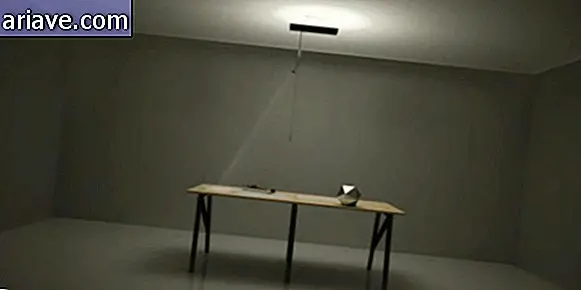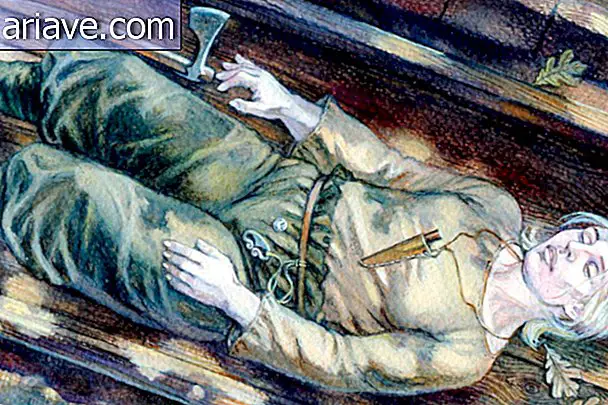Learn the true story about Van Gogh's ear
Dutch painter Vincent van Gogh is now considered one of the greatest artists in history, even though he has only sold one canvas in his lifetime. In addition to works such as "Starry Night" and "The Sunflowers, " Van Gogh is remembered for a curious episode: on December 23, 1888, in a moment of severe depression, the painter cut off a piece of his own ear. About that day, he would later paint the picture known as "Self-portrait with a severed ear."

Van Gogh was a simple-living person with a strong, nervous personality. He even worked in an art gallery, but never succeeded. In addition, he served as a preacher in some mines in Belgium. The desire to devote himself entirely to artist life came in 1880, and by this time Van Gogh's paintings were dark and gloomy, like The Potato Eaters of 1885.
The following year, in 1886, the painter moved to Paris, where his younger brother Theo lived. The brother, who was an art dealer, gave financial support to Van Gogh and even introduced him to many artists such as Paul Gauguin, Camille Pisarro and Georges Seurat. After Van Gogh learned more about the art world, his works began to become brighter and more colorful.

The painter rented a house in 1888 in southern France. There, he made more vivid paintings depicting life in the interior. He also had Gauguin's company, who spent two months working at his side. It was during his friend's stay that Van Gogh had a psychotic break and threatened him with a knife. The fight ended with Van Gogh cutting off a piece of his own ear.
As if that wasn't bizarre enough, the Dutch painter wrapped the piece he had tore from his ear and handed it to a prostitute near a brothel - she would have passed out when she saw what the "little gift" was.
When he got home, Van Gogh lay down and nearly died from the heavy bleeding in his ear. The woman who had received the bizarre gift from the painter warned the police, and thanks to that he was found and taken to a mental hospital afterwards.

Upon awakening, the artist said he wanted to see his friend Gauguin, who refused to comply with Van Gogh's request. In this hospital, the painter was hospitalized for a year. During his time in prison, the artist had cycles of intense creativity and extreme violence. It was at this time that he produced the famous "Starry Night" and "Iris".
After leaving the hospital, Van Gogh moved to Auvers-sur-Oise, a French commune near Paris. There he remained disturbed by moments of extreme loneliness and depression. On July 27, 1890, he shot himself and died two days later at the age of 37.

A German publication on the life of Van Gogh by historians Hans Kaufmann and Rita Widegans argues that the painter may have made up this whole story from the ear to defend his friend Gauguin, who was a great fighter fighter, and in particular. An outbreak of anger would have hit the painter.
According to this theory, the truth about the events never came to light because the two friends kept their pact silent. Gauguin obviously did not want to be charged with an attack, and Van Gogh would be in love with his friend and wanted to keep him close at hand.
“We have carefully rehearsed the testimony of the witnesses and the letters written by the two artists. We have come to the conclusion that Van Gogh was terribly sad about Gauguin's plan to return to Paris after the two of them had spent an unhappy stay together at the Yellow House. ”Kaufmann said in a statement published on ABC News.

The historian explains that he has no clues as to whether Gauguin purposely injured Vincent or not. What is known is that the two had a bad fight, the painter's ear was cut off, and the next day Gauguin returned to Paris and never saw Van Gogh again.
In the first letter Vincent sent to his friend after the incident, he wrote, "I'll keep quiet about it, and so will you." In a letter written by Gauguin years after the accident and addressed to another friend when he talked about Van Gogh, he referred to the artist as "a man with sealed lips, I cannot complain about him."
Kaufmann says there are many hints that the story we know about the accident is not the true one. According to him, this story needs to be retold. So, did you already know that?
* Posted on 26/4/2014
***
Mega is competing for the Digital Influencers Award, and you can help us be double champions! Click here to find out how. Enjoy following us on Instagram and subscribe to our YouTube channel.











